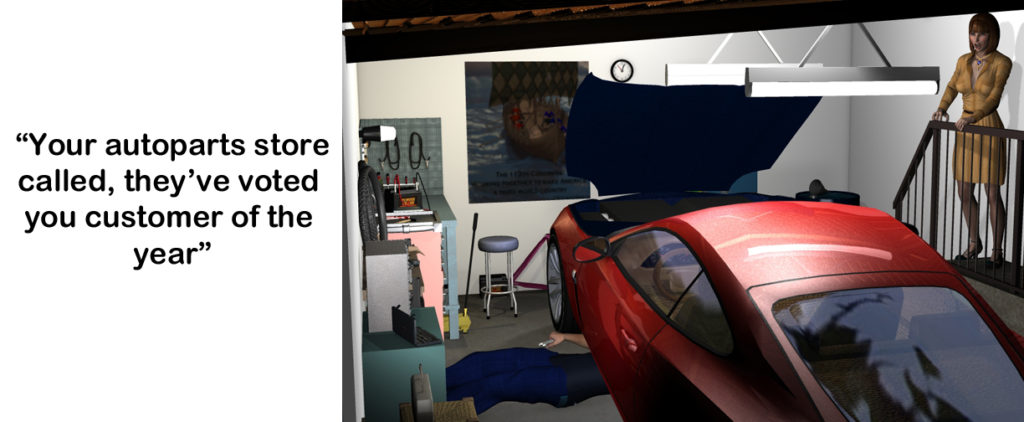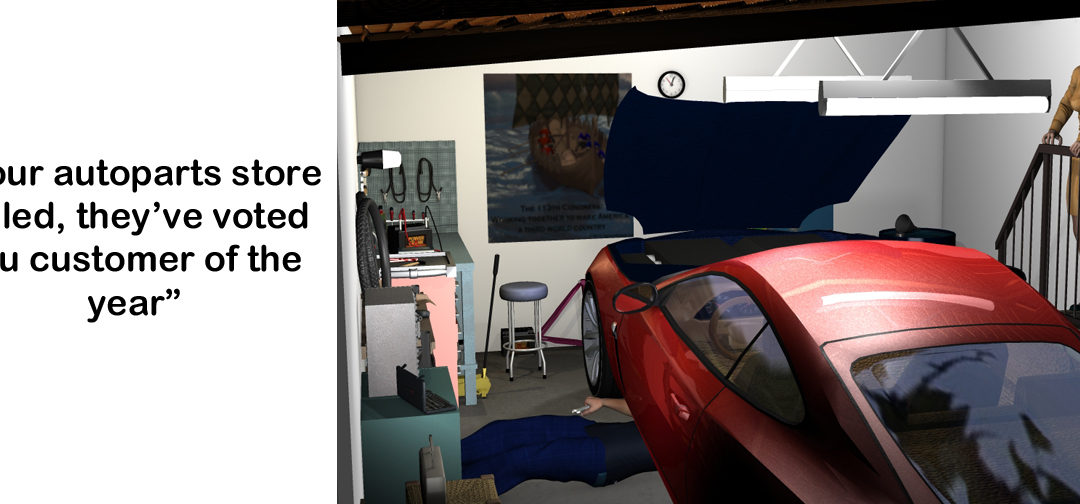Hubris, excessive pride or self-confidence. Last year I barely understood what it meant, today I recognize it for the deadly threat it is.
Speaking as an engineer, we all know how fun it is to impress our non-engineering friends and family with our near mystical understanding of all things mechanical and electrical. To be sure, there’s a price to be paid, we’re the first ones called upon to fix something. At times I look upon this as nature’s way of compensating us for our poor social skills. Unfortunately, my fellow engineers and I know just how untrue this mystical understanding is. While my wife is convinced that I can look at her computer and instantly know what’s wrong. I could only wish for such skill and pray she never installs Windows 10.
We work hard to maintain that mystique, it’s easier than developing social skills but our real secret is that we’re only following a troubleshooting process. How well we follow that process serves to enhance the mystique. However, when hubris enters the picture and we start believing in our own mystique, we often have to face failure.
What’s the process? Accumulate all the available data and hypothesize a failure meeting the criteria. Once you have a hypothesis, develop an experiment to prove or disprove your hypothesis. If you disprove it, develop another hypothesis. You might go through several as you isolate your problem. Once you have a theory that survives your testing, you fix the problem and verify the results.
Sooner or later you’ve had so many successes that you start believing in your own legend. You’re tempted to skip that final verification and leave it to the user to verify how great your skills are because you’re so confident you’re right. Take my word for it, the gain in your mystique is dwarfed by the loss of face you incur when you’re wrong.
Knowing that none of the engineers I’m acquainted with would ever admit to such hubris, I’m forced to use an example from my own life.
My downfall started simply enough. My Mother-in-law was driving her car when she discovered it had almost no acceleration from a stop. After she achieved highway speed, it seemed alright but having made it safely to her driveway, the car refused to start. When she told me the car only clicked when she tried to start it, I immediately knew it was an electrical problem. I still had to isolate the exact failure but how hard could that be?
Raising the hood, it was quickly obvious to me what the problem was, there was no tension on the serpentine belt and without tension there was no way the alternator could charge her battery. It took me a little longer to find out that the belt tensioner had broken and even longer to replace it but once done, the serpentine belt was once again driving the power steering, air conditioner and of course the alternator.
Here’s where I skipped the verification part, I was so sure I had the right problem that I never verified this was the only problem. It was obvious that the belt was loose and there was no question that the now replaced tensioner was unquestionably broken. Too bad her car was not as impressed with my skills as I was. I never imagined that her car could operate well with a broken belt tensioner but three days later she had the exact same problem. As I write this, I realize that I had ignored several important clues. The power steering never quit working and although it was summer in Texas, my Mother-in-law had never complained about a lack of air conditioning. If the belt was slipping so badly the battery wasn’t charging, the power steering and air conditioning would also have been out.
True, the belt tensioner was broken and given enough time might have failed entirely but it took a return visit to determine that the real culprit was her alternator. With the old alternator, I was measuring about ten volts at the battery while the car was running. Way too low for charging. After I replaced the alternator, the new one showed a proper fourteen volts. This time I verified my repair was working.
One small lapse in judgement to impress the world with my engineering ability and I managed to double the amount of work I had to do. Sure I eventually fixed her car but replace enough parts and I was bound to get it right. You don’t gain a reputation for mystical understanding of all things mechanical and electrical by randomly replacing parts.
True, I could swear my Mother-in-law to secrecy and do my best to forget that I ever let hubris get the better of me but I’ve always felt there was wisdom in acknowledging one’s mistakes. Of course, that still doesn’t explain why I’m sharing this story with you.
Although it’s not politically correct to say so, I’ve noticed that the lessons that stick with me longest are the ones involving pain. When I do a head parry in saber my form is almost perfect because my saber coach always managed to hit right on the little nerve cluster on the elbow if my form wasn’t perfect. He would immediately apologize, of course. “It was an accident,” he would always tell me. Of course it was, it just happened every time my parry was sloppy. Needless to say, I was a fast learner.
As you read this, I’m admitting that I let my desire for image cause me to ignore the process and I’m hoping that sharing this experience with you will be painful enough for me that I always remember to verify. Let this serve as an example for my fellow engineers, the moment you start thinking you really do have a mystical understanding of all things mechanical and electrical, is the moment you have to fall back on your lack of social skills.
Will I remember this lesson? I certainly hope so but maybe you should check back in a year to verify. I’ll be here.

© 2016 – 2019, Byron Seastrunk. All rights reserved.










